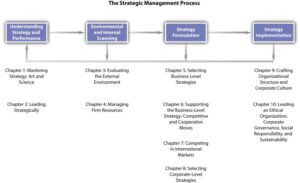
Remote team management is becoming increasingly vital in our interconnected world, where teams often span continents. This approach not only allows for diverse talent acquisition but also brings unique challenges that require innovative solutions. Understanding the fundamentals of managing remote teams effectively is essential for fostering collaboration, enhancing productivity, and driving business innovation.
From establishing clear communication protocols to embracing technology, mastering remote team management can lead to remarkable achievements. As we delve deeper into this subject, we’ll explore key strategies and best practices to build a thriving remote workforce.
Remote Team Management Fundamentals
In today’s digital age, managing remote teams effectively has become paramount for businesses aiming for success and sustainability. Understanding the core principles and challenges of remote team management is essential for ensuring productivity and collaboration among team members scattered across various locations.
Core Principles of Effective Remote Team Management
Successful remote team management hinges on several fundamental principles that facilitate collaboration and efficiency. Firstly, establishing clear communication channels is vital. This means defining which platforms to use for different types of communications, whether it be for quick messages, video calls, or project updates.Key challenges include overcoming the lack of physical presence, which can lead to miscommunication. Another challenge is ensuring accountability among team members who may feel distanced from traditional oversight.
Setting clear expectations is crucial. Team leaders should Artikel goals, deadlines, and performance metrics right from the start. This clarity helps mitigate misunderstandings and aligns everyone towards common objectives.
Communication Protocols

Creating effective communication protocols involves not only choosing the right tools but also defining how and when to use them. Regular check-ins, status updates, and feedback loops can greatly enhance team cohesion.
- Define communication tools: Specify which tools are to be used for emails, chat, and video conferencing.
- Establish rules for responsiveness: Set guidelines on expected response times to maintain workflow.
- Encourage openness: Foster an environment where team members feel comfortable sharing ideas and concerns.
Business Innovation in Remote Settings
Remote work environments offer unique opportunities for business innovation. Companies that embrace flexibility and creativity in their remote operations can harness the benefits of diverse perspectives and solutions.
Innovative Strategies for Remote Teamwork
Enhancing teamwork in remote settings involves leveraging technology and adopting innovative strategies. Remote teams can thrive by implementing collaborative tools and fostering a culture of trust and experimentation.For example, virtual brainstorming sessions can be facilitated using tools like Miro or Google Jamboard. This encourages team members to contribute ideas in real-time, promoting creativity and collaboration.
The Role of Technology
Technology serves as a backbone for remote innovation. With the right tools, teams can collaborate seamlessly across distances. Popular applications such as Slack, Zoom, and Asana streamline communication and project management, making it easier for teams to stay connected.
- Video Conferencing: Regular video meetings help maintain personal connections.
- Cloud Collaboration: Tools like Google Workspace enable real-time document sharing and editing.
- Project Management Software: Asana or Trello help track progress and responsibilities.
Successful Remote Innovations
Several companies have successfully implemented innovative practices in remote settings. For instance, GitLab operates entirely remotely and has developed a comprehensive handbook that Artikels their processes and culture, making it easier for new hires to acclimate.
International Business Considerations
Managing remote teams across different geographies introduces unique challenges, particularly concerning time zones and cultural dynamics. Understanding these factors is crucial for fostering effective collaboration.
Challenges of Time Zones
One of the primary challenges is coordinating meetings and deadlines across various time zones. This often requires flexibility in scheduling to accommodate everyone involved.
- Staggered Meetings: Rotate meeting times to share the inconvenience across the team.
- Time Zone Awareness: Use tools like World Time Buddy to keep track of different time zones.
- Record Meetings: Provide recordings for those who cannot attend live discussions.
Cultural Considerations
Cultural differences can impact communication styles and work ethics. Understanding these differences is key to creating a harmonious team environment. Companies should invest in cultural competency training to help team members appreciate diversity.
Effective Workplace Communication
Communication is critical in a remote work environment, where team members may rely heavily on digital channels for interaction. Structuring effective communication methods can significantly enhance team performance.
Maintaining Seamless Communication
To maintain seamless communication, it is essential to establish clear protocols and use appropriate tools. Regular meetings can create a sense of routine and connection among team members.
- Daily Stand-ups: Short, focused meetings to discuss daily goals and roadblocks.
- Weekly Reviews: Longer meetings to assess progress and recalibrate plans.
- Open Channels: Always keep a communication channel open for immediate concerns.
Enhancing Communication Tools
Multiple tools can enhance workplace communication. For example, using Slack for instant messaging alongside Zoom for video calls can cater to different communication needs.
| Tool | Functionality |
|---|---|
| Slack | Instant messaging and channel-based conversations. |
| Zoom | Video conferencing and webinars. |
| Trello | Project management and task tracking. |
Building Remote Team Culture
Creating a cohesive team culture in a remote environment requires intentional strategies. A strong team culture fosters collaboration, loyalty, and employee satisfaction.
Strategies for Team Culture
To establish a vibrant team culture, leaders should promote inclusivity and engagement among team members. Regular team-building activities can significantly enhance relationships.
- Virtual Coffee Breaks: Encourage casual conversations to build rapport.
- Recognition Programs: Celebrate achievements publicly to boost morale.
- Online Game Nights: Organize fun activities to foster team spirit.
Celebrating Achievements Remotely
Recognizing milestones is essential for remote teams. Companies can celebrate work anniversaries or project completions through virtual awards or shout-outs during team meetings. These recognitions affirm team members’ contributions and boost motivation.
Productivity and Performance Management
Measuring productivity in remote teams requires a proactive approach. Leaders need to implement strategies and tools that provide visibility into performance while ensuring team members feel supported.
Measuring Productivity
Productivity can be gauged through results rather than hours worked. Key performance indicators (KPIs) tailored to each role can help assess contributions effectively.
- Set Clear KPIs: Define specific goals and metrics for each team member.
- Regular Feedback: Provide constructive feedback to guide performance improvements.
- Flexible Work Hours: Allow team members to choose their hours while meeting deadlines.
Tools for Performance Management
Utilizing performance management tools can streamline the evaluation process. Tools like 15Five or Lattice facilitate ongoing feedback and performance reviews.
Marketing Strategies for Remote Teams
In a remote setting, marketing teams can still collaborate effectively and drive campaigns that resonate with audiences. Embracing innovative marketing tactics is vital for success in this landscape.
Collaborating on Marketing Initiatives
Remote teams can work together on marketing projects by utilizing shared platforms and communication tools. This collaboration ensures that everyone stays aligned with the marketing strategy.
- Shared Content Calendars: Use tools like CoSchedule to plan marketing campaigns collaboratively.
- Online Workshops: Conduct training sessions to enhance skills and knowledge.
- Frequent Updates: Keep all team members informed about campaign progress and changes.
Impact of Remote Work on Marketing Campaigns

Remote work has changed how marketing campaigns are executed. With increased reliance on digital channels, teams must adapt quickly to market changes.
Risk Management in Remote Work
While remote work offers many advantages, it also comes with inherent risks. Companies must proactively manage these risks to protect their assets and employees.
Risks Associated with Remote Team Management
Key risks include cybersecurity threats, data breaches, and compliance challenges. Organizations should implement measures to mitigate these risks.
- Cybersecurity Training: Regular training sessions for employees on best practices.
- Secure Networks: Ensure that all team members use secure connections for work-related tasks.
- Compliance Audits: Conduct periodic reviews to ensure adherence to regulations.
Importance of Cybersecurity Measures
Cybersecurity is paramount, given the increase in remote work vulnerabilities. Companies should invest in cybersecurity tools such as VPNs and firewalls to safeguard sensitive information.
Effective Business Networking
Building a professional network remotely can be a rewarding endeavor. Networking opens doors to opportunities and collaborations that can enhance business growth.
Building a Professional Network Remotely
To build a professional network in a remote context, individuals should leverage virtual platforms and tools that facilitate meaningful connections.
- Use LinkedIn: Actively engage with industry-related content and connect with peers.
- Join Virtual Conferences: Participate in webinars and online events to meet new contacts.
- Networking Groups: Engage in groups that align with your professional interests.
Leveraging Virtual Networking Opportunities
Virtual networking offers unique advantages, such as the ability to connect with a diverse audience without geographical constraints.
Sales Management in Remote Environments
Managing sales teams remotely presents unique challenges but also opportunities for growth. Adapting strategies to the remote context is essential for achieving sales targets.
Challenges of Managing Sales Teams Remotely
Sales managers must address issues such as maintaining motivation and ensuring effective training of remote sales personnel.
- Regular Check-Ins: Schedule one-on-one meetings to monitor performance and provide support.
- Online Training Programs: Implement virtual training sessions to enhance sales skills.
- Utilize CRM Tools: Leverage customer relationship management software to track sales activities.
Facilitating Remote Sales Processes
Tools that facilitate remote sales processes, such as video conferencing software and digital sales platforms, are crucial for maintaining client interactions effectively.
Strategic Planning for Remote Teams
Strategic planning is essential for remote teams to operate effectively. Aligning team goals with organizational objectives can drive performance and success.
Steps for Developing a Strategic Plan
Creating a strategic plan for remote teams involves several key steps that ensure alignment and clarity.
- Define Objectives: Clearly articulate team goals that align with the company’s vision.
- Involve Team Members: Engage the team in the planning process to gain diverse insights.
- Review and Adjust: Regularly assess the plan’s effectiveness and make necessary adjustments.
Aligning Goals with Organizational Objectives
Aligning remote team goals with broader organizational objectives ensures that all efforts contribute to the overall success of the company. This fosters a sense of purpose and commitment among team members.
Workplace Safety and Well-Being
The well-being of remote employees is crucial for maintaining productivity and morale. Organizations must prioritize mental health and create a safe working environment.
Importance of Mental Health in Remote Work
Mental health challenges can arise in remote settings due to isolation and stress. Employers should actively promote mental wellness initiatives.
- Wellness Programs: Offer resources such as access to therapy or wellness apps.
- Regular Check-Ins: Encourage managers to check on employees’ mental health and work-life balance.
- Create a Supportive Environment: Foster a culture where employees feel comfortable discussing mental health issues.
Promoting a Safe and Healthy Work Environment
Employers have a responsibility to support the well-being of remote employees. This includes providing ergonomic resources and flexible working arrangements that prioritize health.
Business Outsourcing and Remote Collaboration
Outsourcing in a remote context can offer numerous benefits, but it also presents challenges that need careful management. Understanding how to navigate these issues is key.
Benefits and Challenges of Outsourcing Remotely
Outsourcing can lead to cost savings and access to specialized skills, but it also requires effective communication and trust-building to ensure successful collaboration.
- Cost Efficiency: Outsourcing can reduce overhead costs for businesses.
- Access to Expertise: Hiring remote specialists can enhance project quality.
- Communication Barriers: Time zone differences can complicate coordination.
Managing Outsourced Teams from a Distance
Effective management of outsourced teams involves establishing clear communication channels and expectations. Regular updates and performance evaluations help maintain quality.
Final Conclusion
In conclusion, effective remote team management is crucial for success in today’s digital landscape. By navigating the challenges and leveraging the opportunities presented by remote work, organizations can create a vibrant team culture and achieve their goals. As we move forward, embracing innovative strategies and fostering strong communication will ensure that remote teams not only survive but thrive in a competitive environment.
Q&A
What are the key benefits of remote team management?
Remote team management enables access to a broader talent pool, promotes flexibility, and often leads to increased employee satisfaction and productivity.
How can I ensure effective communication in a remote team?
Utilizing various communication tools, establishing regular check-ins, and setting clear expectations can foster effective communication among remote teams.
What are some common challenges faced in remote team management?
Common challenges include time zone differences, maintaining team cohesion, and potential communication barriers due to distance and technology reliance.
How can I measure productivity in a remote team?
Productivity can be measured through performance metrics, regular feedback, and setting achievable goals that align with the organization’s objectives.
What role does technology play in remote team management?
Technology facilitates communication, collaboration, and project management, making it essential for the seamless operation of remote teams.




